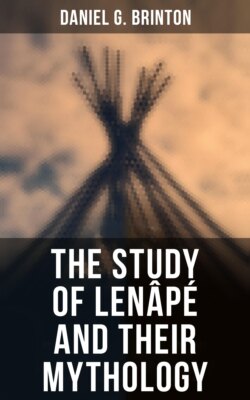Читать книгу The Study of Lenâpé and Their Mythology - Daniel G. Brinton - Страница 13
На сайте Литреса книга снята с продажи.
The Mohegans.
ОглавлениеTable of Contents
The Mohegans, Mo-hé-kun-ne-uk, dwelt on the tide-waters of the Hudson, and from this their name was derived. Dr. Trumbull, indeed, following Schoolcraft, thinks that they "took their tribal name from maingan, a wolf, and Moheganick = Chip. maniganikan, 'country of wolves.'"[18] They, themselves, however, translate it, "seaside people," or more fully, "people of the great waters which are constantly ebbing or flowing."[19] The compound is machaak, great, hickan, tide ("ebbing tide," Zeis; "tide of flood," Campanius) and ik, animate plural termination.
The Mohegans on the Hudson are said to have been divided into three phratries, the Bear, the Wolf and the Turtle, of whom the Bear had the primacy.[20] Mr. Morgan, however, who examined, in 1860, the representatives of the nation in Kansas,[21] discovered that they had precisely the same phratries as the Delawares, that is the Wolf, the Turtle, and the Turkey, each subdivided into three or four gentes. He justly observes that this "proves their immediate connection with the Delawares and Munsees by descent," and thus renders their myths and traditions of the more import in the present study.
Linguistically, the Mohegans were more closely allied to the tribes of New England than to those of the Delaware Valley. Evidently, most of the tribes of Massachusetts and Connecticut were comparatively recent offshoots of the parent stem on the Hudson, supposing the course of migration had been eastward.
In some of his unpublished notes Mr. Heckewelder identifies the Wampanos, who lived in Connecticut, along the shore of Long Island Sound, and whose council fire was where New Haven now stands, as Mohegans, while the Wapings or Opings of the Northern Jersey shore were a mixed clan derived from intermarriages between Mohegans and Monseys.[22]
